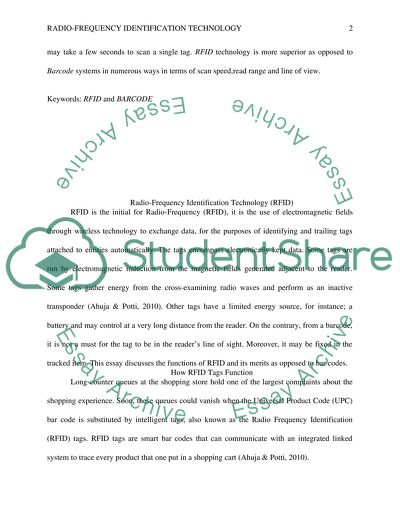Cite this document
(Radio-Frequency Identification Technology Research Paper, n.d.)
Radio-Frequency Identification Technology Research Paper. Retrieved from https://studentshare.org/technology/1685440-radio-frequency-identification-technologyrfid-is-better-than-the-barcode-system-to-track-products-in-the-whole-sale-distribution-centers-becauserfids-scan-speed-is-faster-and-read-range-is-longer-in-comparison-with-the-barcode-systems-slower
Radio-Frequency Identification Technology Research Paper. Retrieved from https://studentshare.org/technology/1685440-radio-frequency-identification-technologyrfid-is-better-than-the-barcode-system-to-track-products-in-the-whole-sale-distribution-centers-becauserfids-scan-speed-is-faster-and-read-range-is-longer-in-comparison-with-the-barcode-systems-slower
(Radio-Frequency Identification Technology Research Paper)
Radio-Frequency Identification Technology Research Paper. https://studentshare.org/technology/1685440-radio-frequency-identification-technologyrfid-is-better-than-the-barcode-system-to-track-products-in-the-whole-sale-distribution-centers-becauserfids-scan-speed-is-faster-and-read-range-is-longer-in-comparison-with-the-barcode-systems-slower.
Radio-Frequency Identification Technology Research Paper. https://studentshare.org/technology/1685440-radio-frequency-identification-technologyrfid-is-better-than-the-barcode-system-to-track-products-in-the-whole-sale-distribution-centers-becauserfids-scan-speed-is-faster-and-read-range-is-longer-in-comparison-with-the-barcode-systems-slower.
“Radio-Frequency Identification Technology Research Paper”, n.d. https://studentshare.org/technology/1685440-radio-frequency-identification-technologyrfid-is-better-than-the-barcode-system-to-track-products-in-the-whole-sale-distribution-centers-becauserfids-scan-speed-is-faster-and-read-range-is-longer-in-comparison-with-the-barcode-systems-slower.


